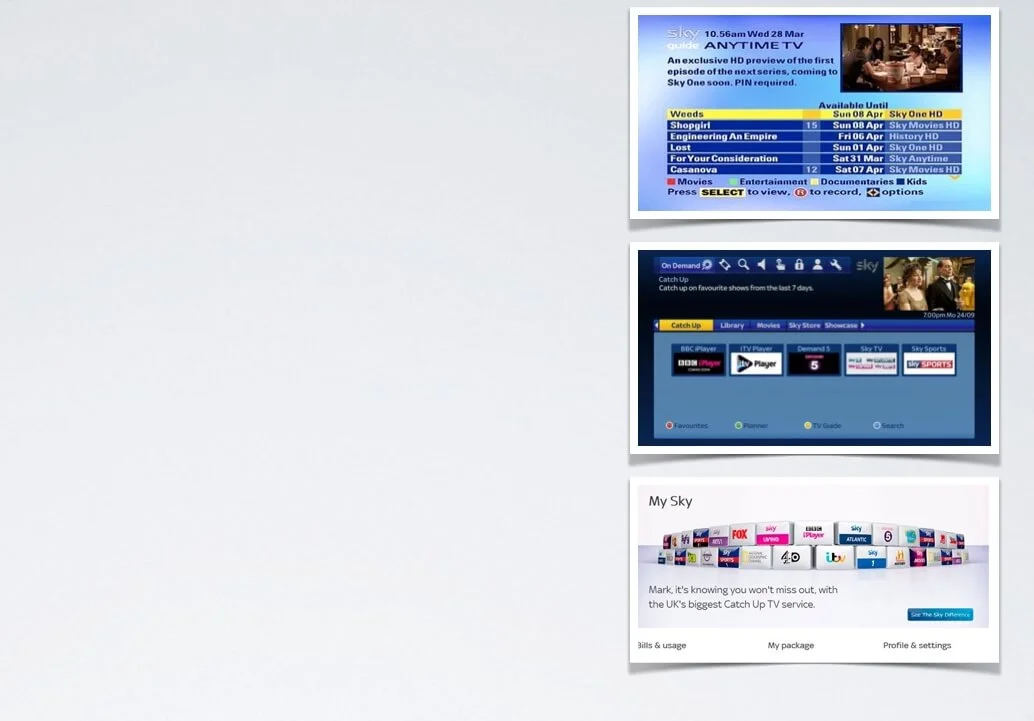
Key Takeaways
- 1 Sky embedded Ethernet ports in millions of devices years before activation, creating a $2 billion strategic moat through patient platform thinking
- 2 Platform strategies require strategic patience - waiting for optimal market conditions rather than immediate feature activation
- 3 Small additional investments during product development can create massive strategic flexibility and competitive advantages later
- 4 True competitive moats come from making alternatives genuinely inferior for customers through integrated value creation
Most executives obsess over quarterly earnings. The best think in three-year cycles. In 2006, while celebrating our HD launch success, we were already building the infrastructure for our next competitive moat - one that wouldn’t activate for years.
The $2 Decision That Defied Finance Logic
Embedded in every Sky+ HD box was a component that served no immediate purpose: an Ethernet port. Adding any unnecessary component to a bill of materials is typically a career-limiting decision. Finance teams exist to eliminate such “waste.”
We added it anyway.
Our strategic analysis projected a future where broadband speeds would exceed 2Mbps across significant UK households - enabling content delivery that could complement or even replace satellite transmission. This wasn’t market research; it was market creation thinking.
Platform Strategy vs Product Strategy
While competitors focused on perfecting their current offerings, we architected for multiple futures:
Addressable market expansion. The Ethernet capability positioned us to serve approximately 4 million households currently outside our satellite footprint - a 40% market expansion opportunity.
Service integration advantage. Rather than simply bundling broadband billing with TV services, we designed technical interdependence. Customers wouldn’t just receive multiple services on one bill - they’d experience genuinely integrated functionality that created switching costs.
Optionality preservation. The embedded capability gave us strategic flexibility to respond to market conditions, competitive threats, or technology developments years before they materialized.
Strategic Patience Under Performance Pressure
The most sophisticated aspect of this strategy was recognizing when NOT to launch. Post-HD success, we had market momentum that could have supported immediate IPTV service introduction.
Instead, we waited.
Launching prematurely would have confused our HD value proposition and potentially cannibalized our core offering. Strategic discipline meant allowing our broadband subscriber base to reach 2 million customers before activating latent device capabilities.
This approach demonstrates the difference between tactical opportunism and strategic architecture.
Platform Network Effects in Action
Recent market data validates the three-year vision. Sky+ HD boxes with broadband connectivity show dramatically increasing engagement rates. This isn’t accidental correlation - it’s engineered platform synergy.
The integration creates compounding value:
- Content discovery improves across both satellite and broadband channels
- Service reliability increases through redundant delivery mechanisms
- Customer lifetime value expands through deeper platform engagement
- Switching costs multiply through technical and content integration
Competitive Positioning Through Future-Backward Planning
Our competitors now face a strategic dilemma we created years ago. They must simultaneously:
- Invest in current-generation competitive responses to our HD leadership
- Develop next-generation platform capabilities to match our integrated offerings
- Rebuild customer relationships that have become technically and experientially entrenched
This is the essence of sustainable competitive advantage - forcing competitors to fight multiple battles across different time horizons while operating from inferior strategic positions.
Executive Framework: Building Tomorrow’s Moats Today
The Sky experience demonstrates three critical strategic principles:
Embed optionality early. Small additional investments during product development can create massive strategic flexibility later. The key is distinguishing between genuinely strategic capabilities and speculative feature bloat.
Time launches for maximum strategic impact. Platform strategies require patience. Premature activation often destroys more value than delayed competitive response.
Engineer customer lock-in through value creation. True competitive moats come from making alternatives genuinely inferior for customers, not just contractually expensive to abandon.
Most importantly: competitive advantage compounds when you think in platform terms rather than product cycles. While competitors optimized individual offerings, we optimized the strategic battlefield itself.
The Ethernet port wasn’t a component decision - it was an infrastructure investment in future market control.
Image courtesy of BSkyB